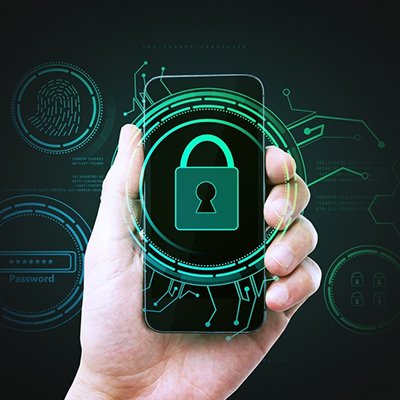SNUH Clinical Research Institute
Since its establishment in 1885, Seoul National University Hospital has been one of the nation's finest medical facilities. One of the many excellent medical research departments in SNUH, the Clinical Research Institute is the first specialised organization for clinical research in Korea. The operation units in CRI include 3 research wards, 6 outpatient clinics, pharmacy department, clinical laboratory/core lab & serum bank, analytical/pharmacology lab, Pharmacoepidemiology Division, and Pharmacodynamic Laboratories.
Challenges
CRI faced a problem. They didn't have an adequate human resources management system for their building filled with doctors, researchers, and administrative/security staff coming in and out. They had had an RFID access control system in place to limit access to certain areas of the building, but this just happened to make the human resources management more difficult.
There were many cases where some employees who have terminated their employment did not properly return the RFID cards to the HR management office, and those unreturned cards were often misused by others. As a result, out of about 2,000 people working in the CRI building, the management office wasn't able to track almost 5-600 people. To protect their intellectual properties, people and expensive medical equipment, they decided they were in critical need for a security upgrade to a biometrics system, which effectively eliminates the possibility of fraudulent access using others' credentials as it requires biometric features of the entrant only specific to that individual.
"For a place like CRI, where every bit of information needs protection and a variety of extremely high-priced medical equipment is kept, security means more than just a necessity." said project manager Do-Hyeong Kim, of the Domestic Sales Department of IDTECK.
Choosing IDTECK
"We contacted several local solutions providers to deliver the solution we needed, and after doing some research, we decided IDTECK would provide the best solution for us," said Hyeong-seop Kim, senior manager of CRI's Administrative Department. "Our key considerations in selecting IDTECK were hardware stability and experience in projects of similar scale. Our research revealed that compared to its competitors, IDTECK's products possess strength in ability of configuring and implementing large-scale systems," he added. Since IDTECK's readers and controllers offer strong communication via TCP/IP network and have stability built up over a number of years, they display a strong performance when applied to a large-scale access control system comprising of control panels and readers. These strengths, coupled with the competitive pricing, were recognised by CRI staff as compelling and served as the main reason for choosing IDTECK's solution.
 |
| As part of its security upgrade, SNUH decided to install a new biometric access control system from IDTECK |
Project requirements
The building of the SNUH Clinical Research Institute has a total of 11 floors plus a basement. Access to certain floors or labs had to be restricted exclusively to authorised staff. About 2,000 users including researchers and administrative staff needed to be accommodated. Users on certain floor groups had to be managed in decentralised ways due to the large number of users on each floor and the high turnover rate, which is common to the medical research industry. Security for the basement had to be much tighter than other areas as it is where the power generation room, electric control room, and other such dangerous facilities are located.
Solution
IDTECK designed the solution using 43 FINGER006 fingerprint readers with 11 iTDC access control panels. The FINGER006 is IDTECK's fingerprint-recognition proximity card reader with a keypad. The reason behind choosing the FINGER006 was mainly because the reader provides various authentication modes including RF card + fingerprint and RF card + password so that some researchers whose fingerprints are injured or damaged from using medical equipment can gain access using card + password verification in lieu of fingerprint verification. In some areas like radiation rooms where researchers need to enter with sterile gloves on, the card-only authentication mode was applied, and in the basement where several potentially dangerous facilities are located, the RF card + fingerprint + password authentication mode was applied for the highest security level.
Meanwhile, the iTDC is IDTECK's multi-door access control panel with the capacity to control up to 4 readers. Configuration using control panels like the iTDC is desirable where multiple reader units must work together as it offers both strong stability and a high level of security.
The FINGER006 readers were installed at 43 entry points including those for high security areas such as research labs, operating rooms, radiation rooms and administrative offices. For controlling these readers, 11 iTDC control panels were placed in secure control rooms across the building and then connected to host computers.
"Our key considerations in selecting IDTECK were hardware stability and experience in projects of similar scale" |
The main server computer, which is responsible for across-the-board access control, was located in the Physical Control room while 4 client computers, responsible for security monitoring and user registration, were located in 4 different administrative offices on the 2nd, 3rd, 7th and 9th floors, respectively. The STARWATCH iTDC PRO II software was installed on those host computers, and a Hamster (Fingerprint Enrollment Device) and the FINGERPRINT ENROLLMENT PRO 2006 software was installed on each computer, allowing the administrators of each floor group to add users to the system individually. Convenience for the busy staff was also another consideration. While ensuring tight security on entry, exit was made quick and hands-free by installing PIR sensors at exits, in order to provide hands-free access for the researchers who often have to carry heavy loads outside.
The STARWATCH iTDC PRO management software was configured to automatically delete those who had no entry events for 2 months, eliminating the problem in which those who have already left the institute still remained in the database.
Benefits realised
"The administrative managers were very happy that they would no longer have to worry too much about security of the institute as they now have complete control over the entrants and an added layer of security with biometric verification," remarked Do-hyeong Kim, a domestic sales representative of IDTECK, adding: "One of the HR managers raved about the convenience and versatility offered by our management software. After all, they no longer worry about the unidentifiable entrants because fingerprint verification provides a virtually foolproof method of ensuring that the person who enters is the same authorised person."
"Our key considerations in selecting IDTECK were hardware stability and experience in projects of similar scale. Our research revealed that compared to its competitors, IDTECK's products possess strength in ability of configuring and implementing large-scale systems."


